Analyzing the Set-piece Patterns in the First Round of 2022 FIFA World Cup Matches
In the first round of World Cup matches, we saw various teams cause a major threat with set-pieces. Let’s take a look at some of the most interesting and effective patterns that led to genuine chances from set-pieces over the first week of the tournament.
Germany vs. Japan
- Japan had 3 zonal players, 2 players at the edge of the box for the 2nd ball (one of them preventing a cutback pass), 5 players from Germany were marked (4 runners and one at the 6-yard box was standing on his marker), and the delivery was targeted towards the far post in front of the penalty spot with an in-swinging delivery
- Germany wanted to put Antonio Rüdiger in a 1v1 situation with him and Kai Havertz moving in opposite directions, Havertz running towards the near post and Rüdiger moving into the far post, whilst the other two runners (Nico Schlotterbeck and Thomas Müller) dragged their markers away from the area that Rüdiger was running into
- Müller pulled Rüdiger’s marker slightly with his hand to ensure that his teammate was in an ideal situation, and Rüdiger found himself in a 1v1 and was looking to exploit his opponent’s poor body orientation, but he was unable to make Japan pay and failed to make accurate contact and precision with the header
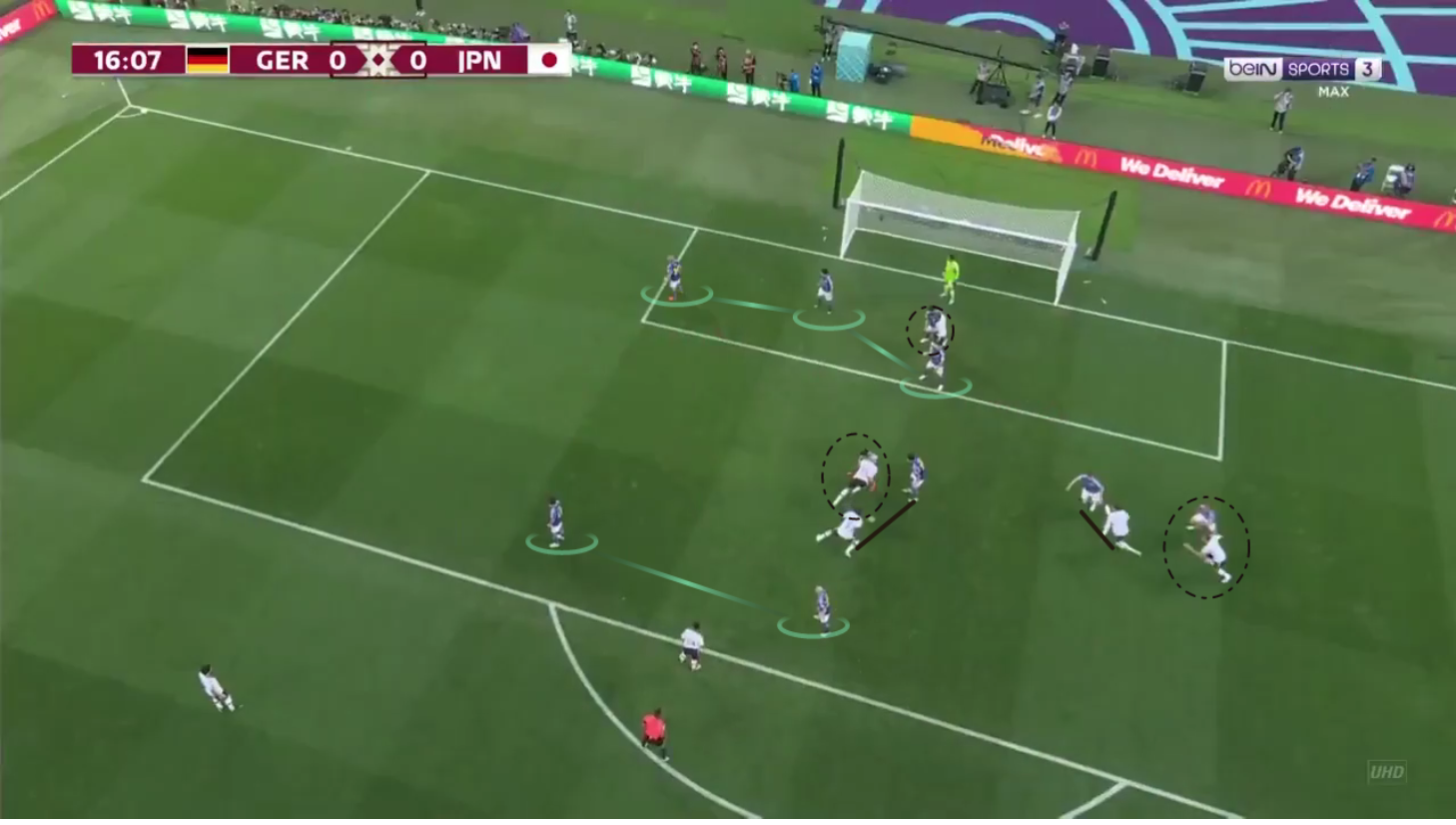
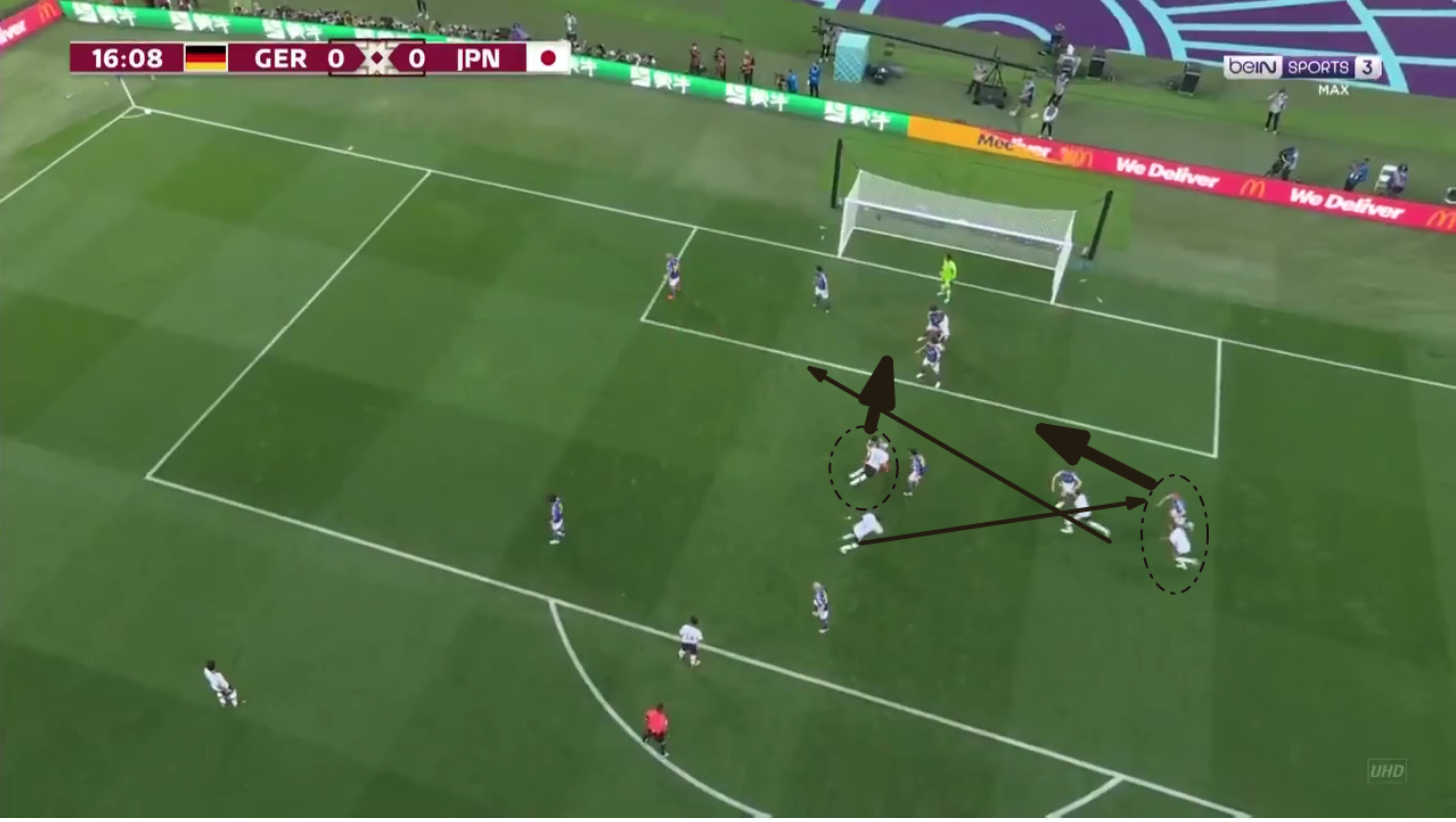
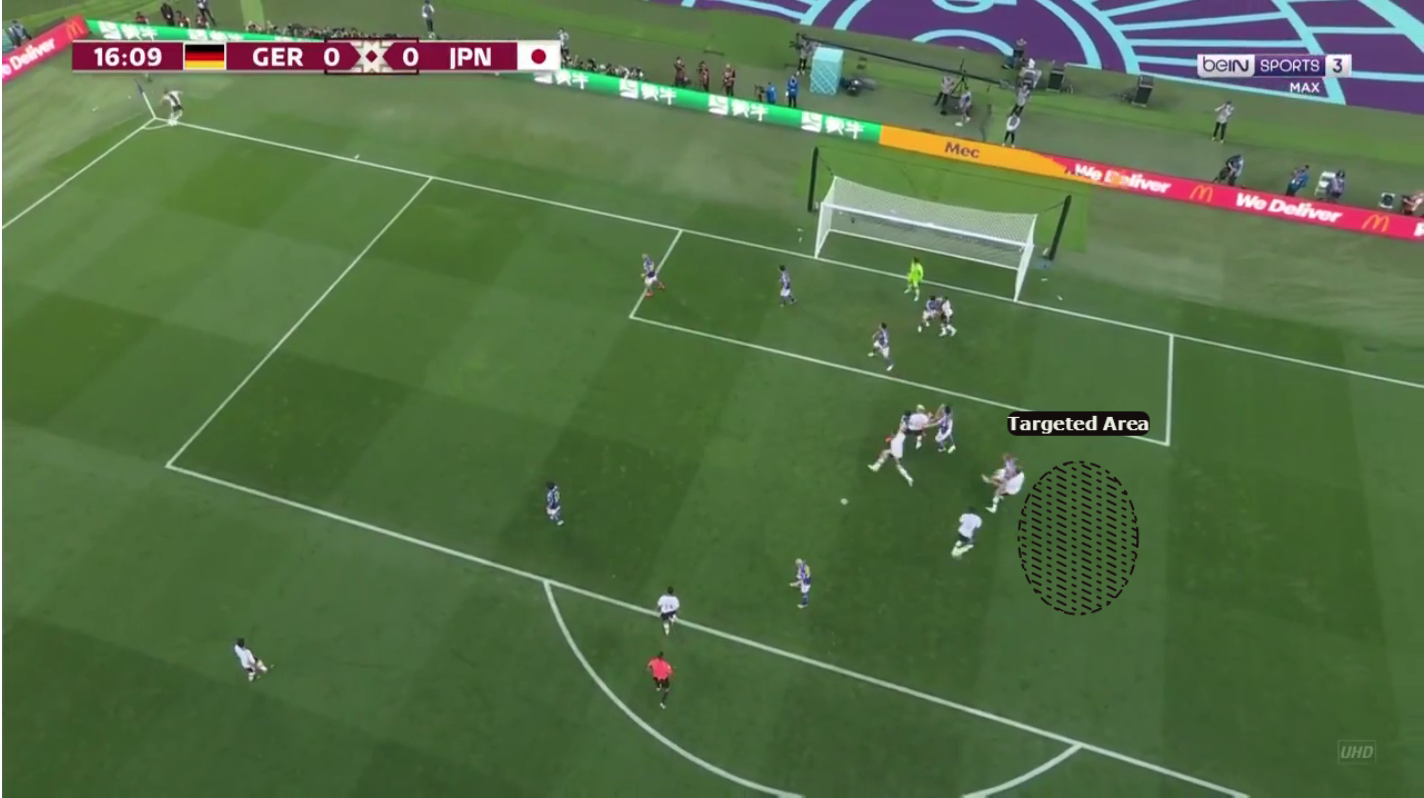

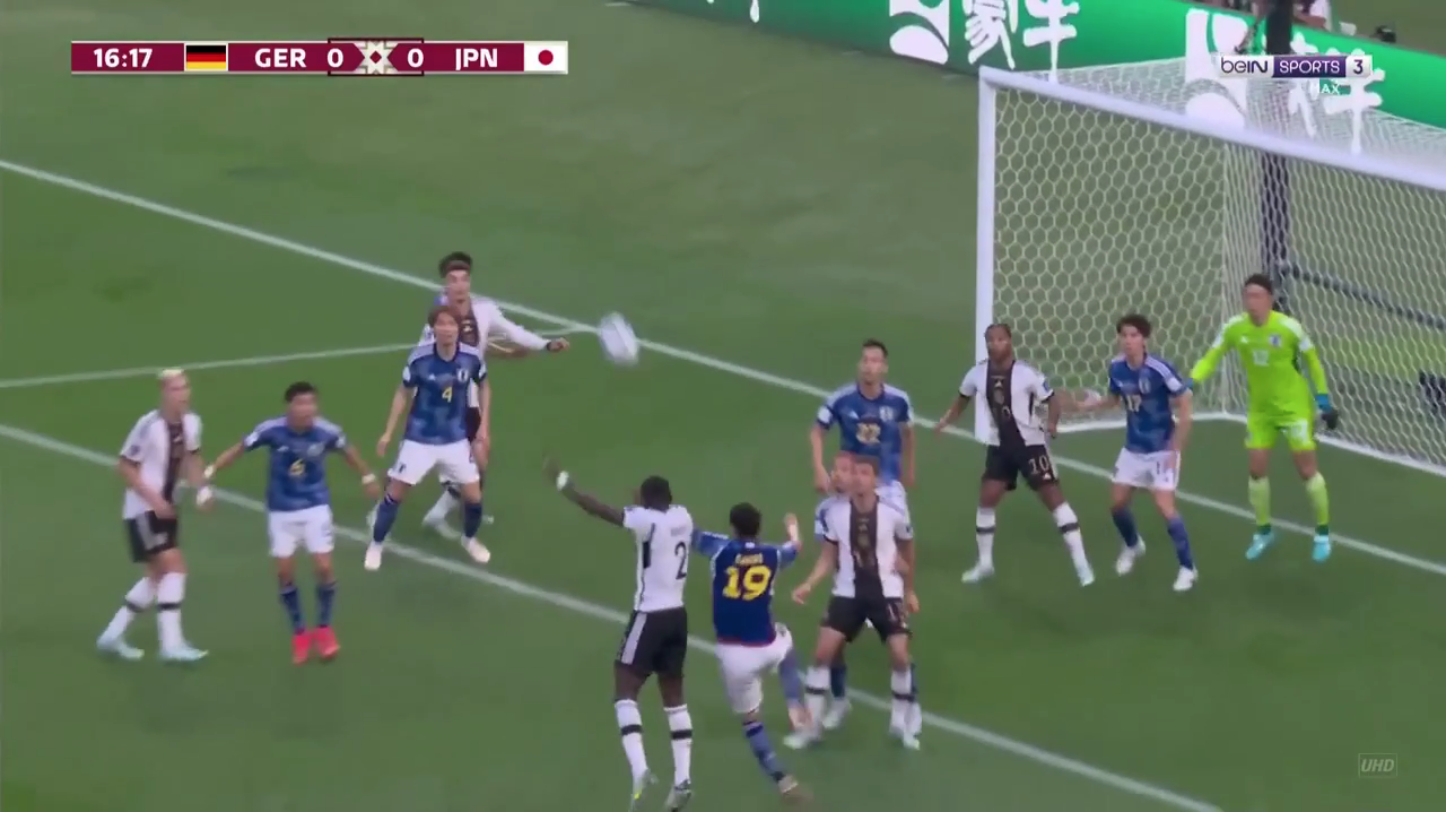
England vs. Iran
- Bukayo Saka moved to provide a short corner option which dragged two Iranian players out of position. England had two players at the edge of the box to fight for the second ball and one player at the back to sweep up any potential danger. Iran had 3 zonal players ( near post, far post, cut back area) and 5 players from England were marked.
- The delivery was targeted towards the middle, in front of the penalty spot with an out-swinging delivery. Raheem Sterling made a run to the near post which dragged two opponents to prevent him from making the first contact. Declan Rice ran to the near post to drag his marker out of the targeted area and created the space for Harry Maguire and John Stones.
- Maguire and Stones both ran to the targeted area, with Stones using his hands and making a body feint to create separation and Maguire using a double body feint to create separation and kept his hand on Maguire and his eye on his movement, whilst Harry Kane ran towards the far post. Maguire would end up making contact but was unable to head home into the back of the net.

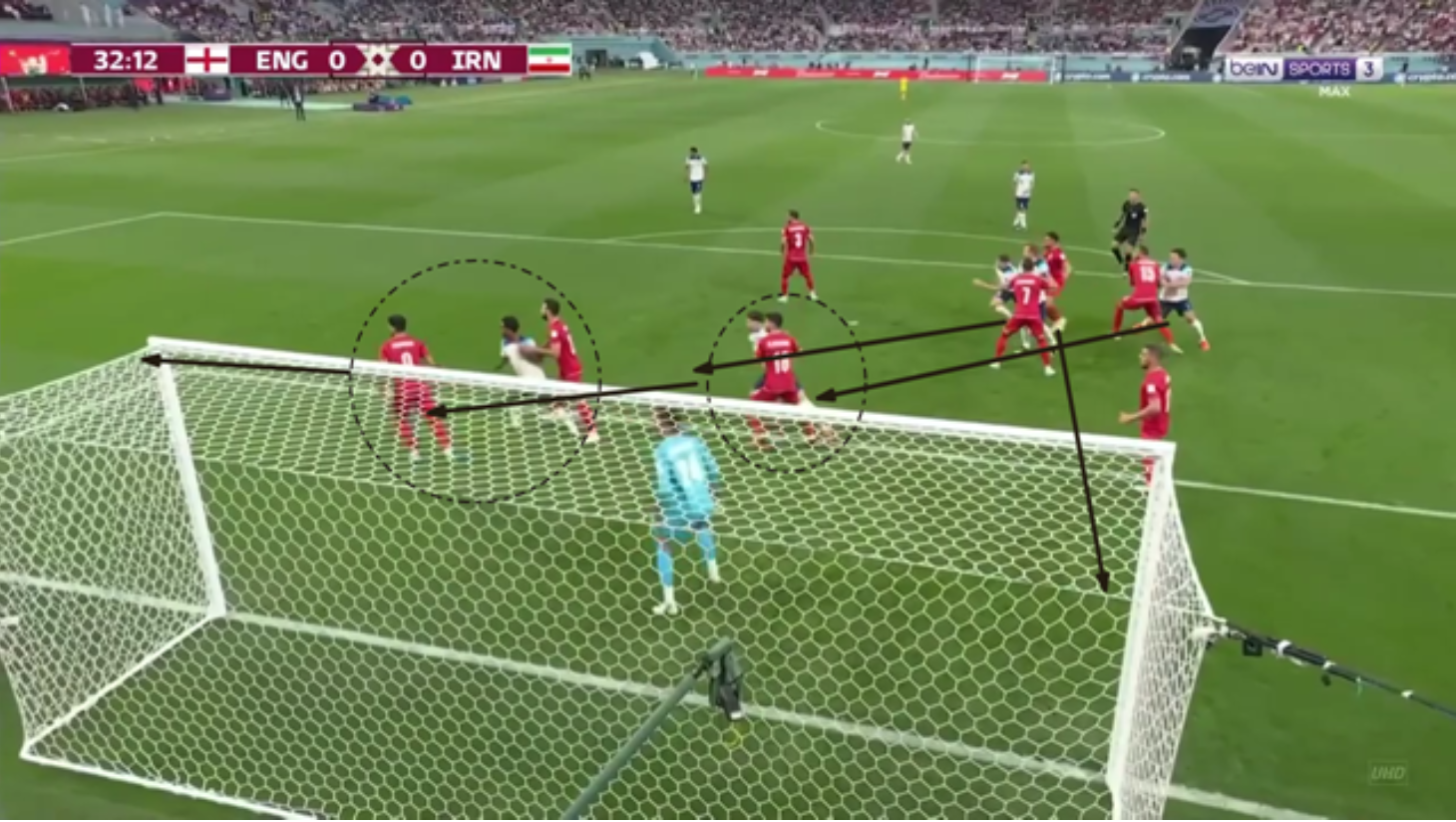
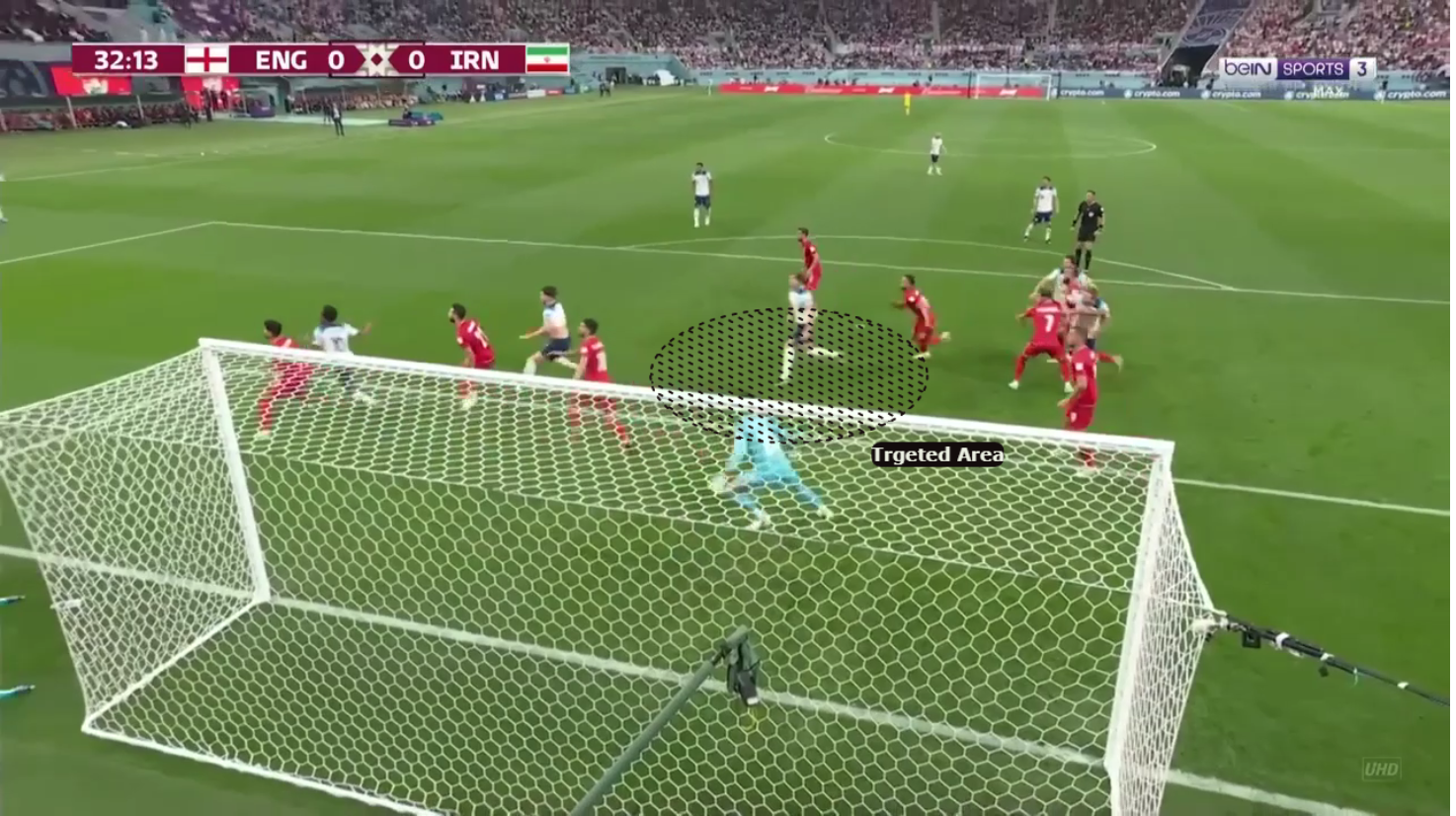
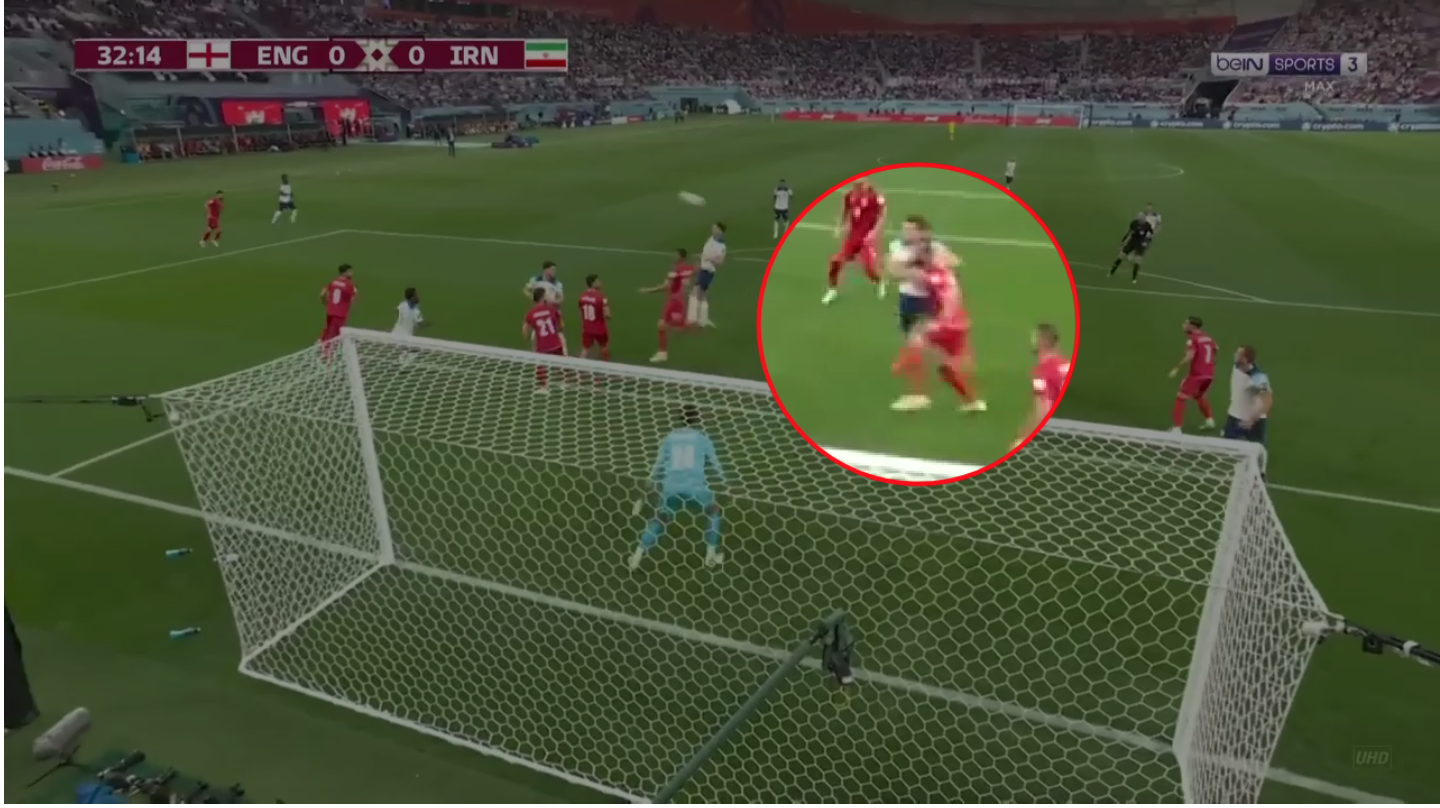
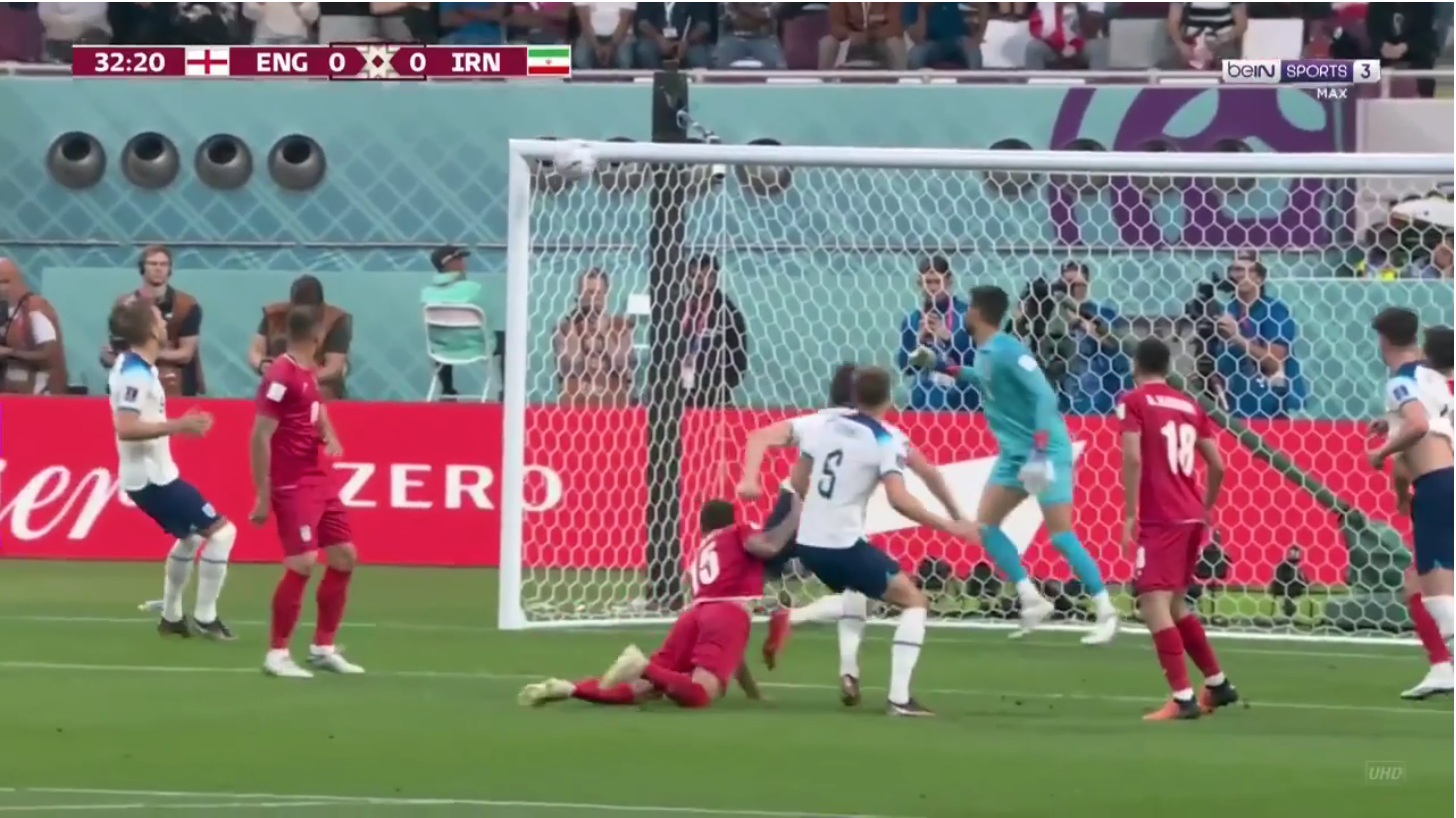
Denmark vs. Tunisia
- One Danish player moved to the short corner which dragged two Tunisian players out, whilst Tunisia had four zonal players and one player at the edge of the box to challenge the second ball. Tunisia had three man-markers vs. four Danish players, with Christian Eriksen playing an out-swinging delivery towards the far post
- Two Danish players moved in close proximity with one another, and one Danish player stayed close to Tunisia’s goalkeeper to prevent him from moving outwards, and one of the two Danish players who were packing close to each other would go on to make a run to the near post, whilst the other attacked the far post, and they faced one player from Tunisia who didn’t know which man to follow
- The targeted player for Denmark was Andreas Christensen who was marked and gave a little push to his marker and then Christensen ran free to the targeted area. The Barcelona defender ran to the blind side of the last zonal man which led to an orientation problem (the zonal defender didn’t see the ball and Christensen at the same time), In addition to the dynamic advantage and heading ability for Christensen, he took an advantage over the last zonal man from Tunisia, but his effort careened off the post.
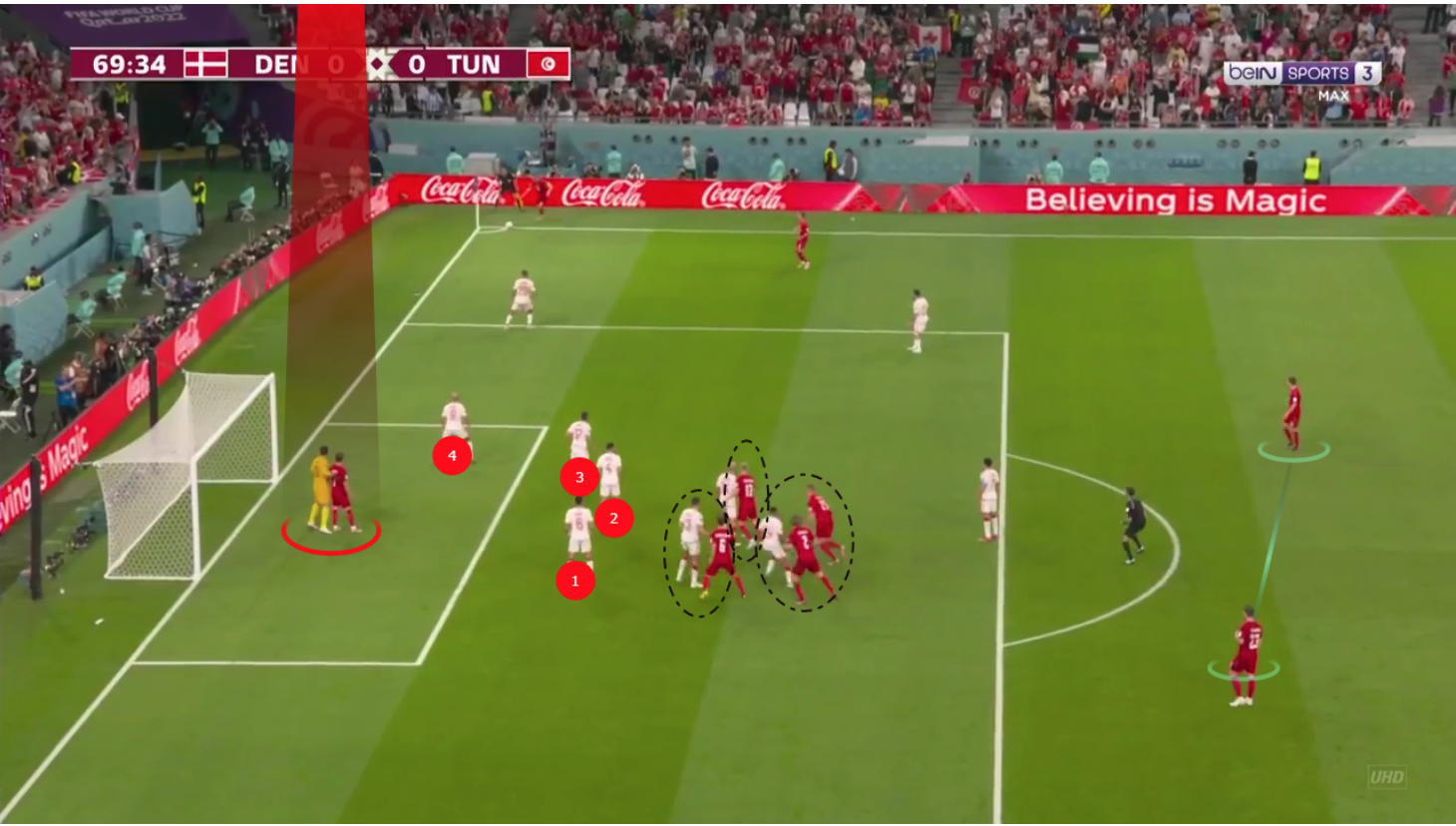
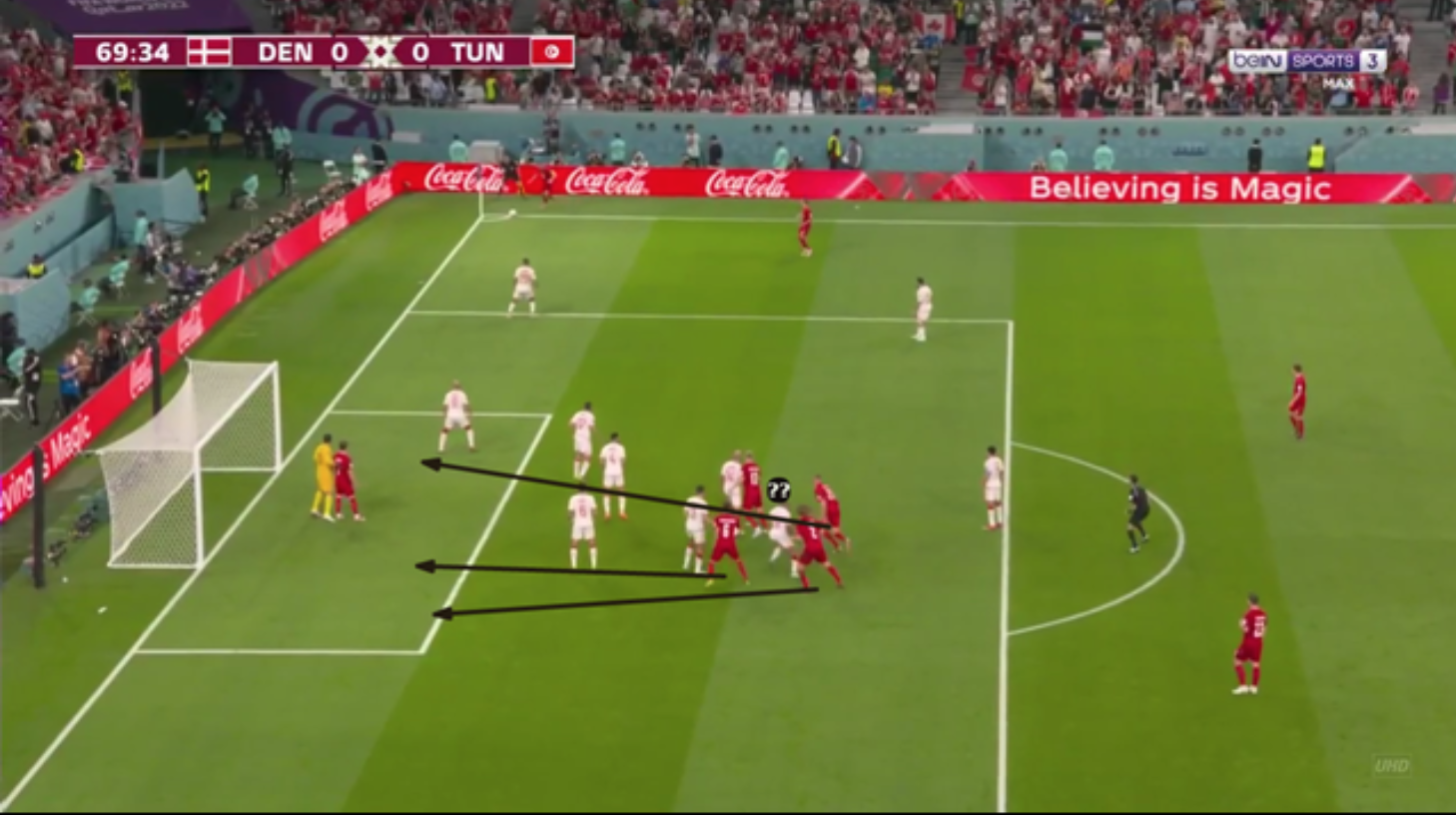
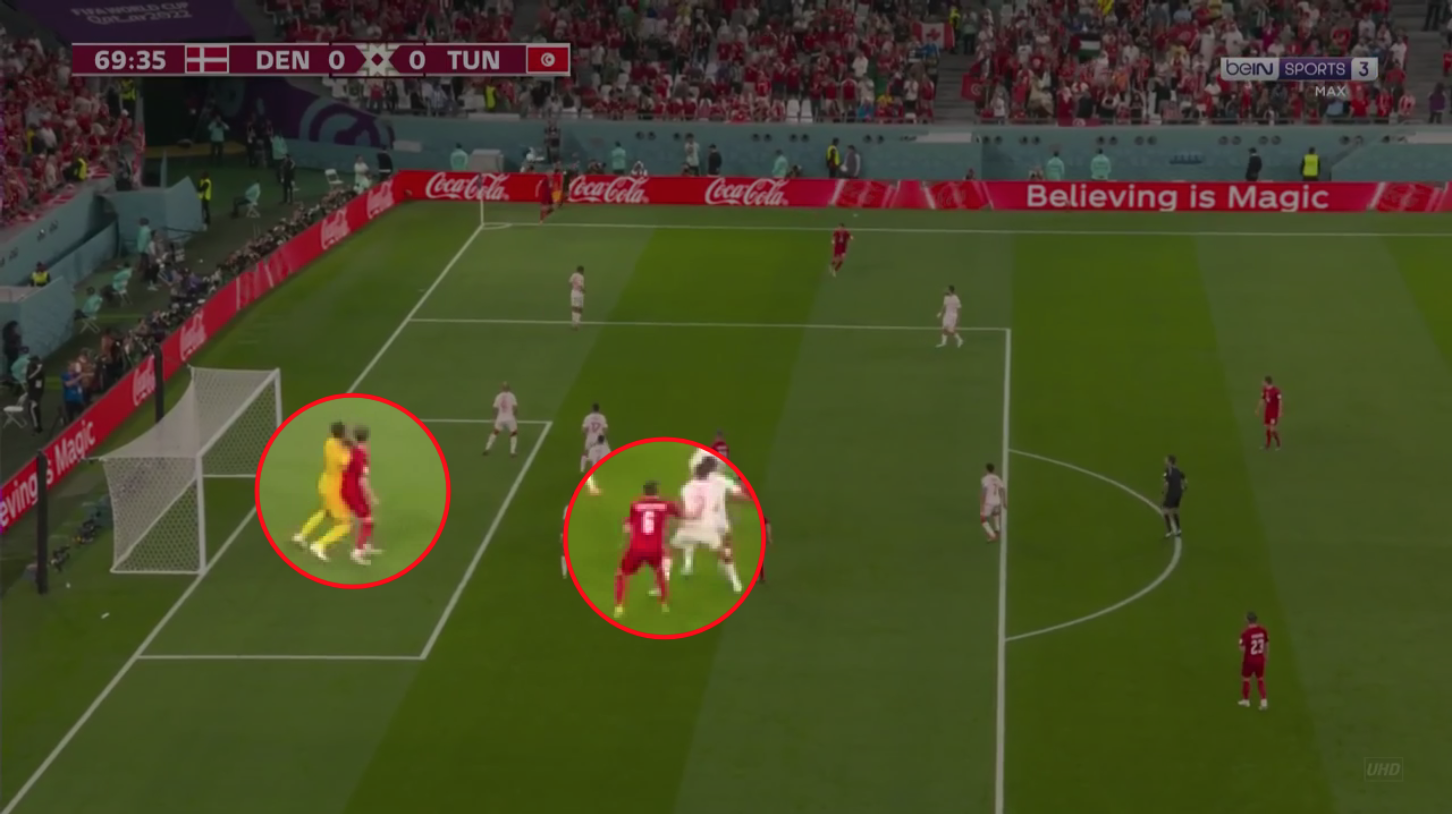

By: Abdelrhman Mounir / @AbdelrhmanMunir
Featured Image: @GabFoligno / Eddie Keogh – The FA
